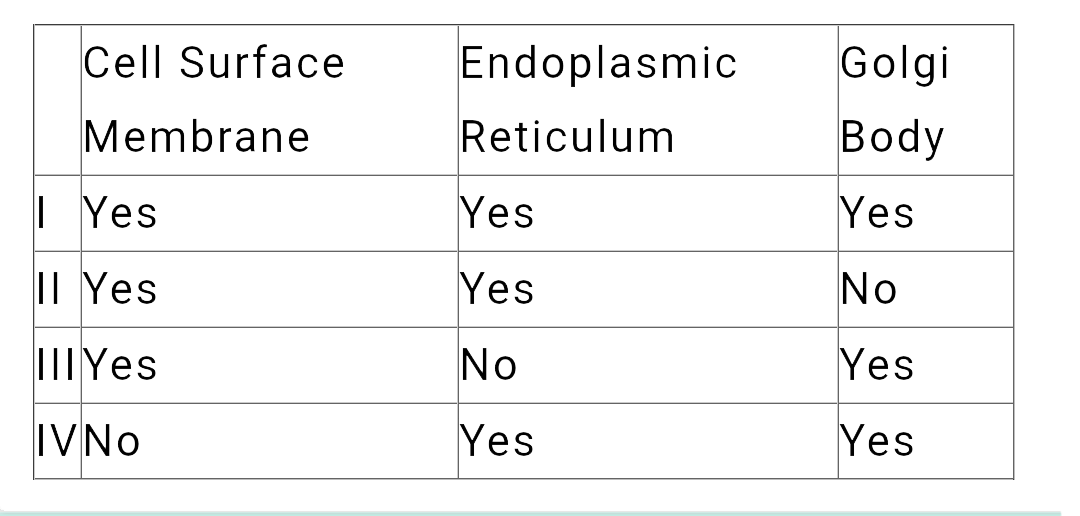Certain golgain vesicles which are budded- out from the trans - face contains acid hydrolases. Such vesicles are better termed as
Heterophagosomes
Microsomes
Phragmosomes
Primary lysosomes
The correct Answer is:D
Step by step video, text & image solution for Certain golgain vesicles which are budded- out from the trans - face contains acid hydrolases. Such vesicles are better termed as by Biology experts to help you in doubts & scoring excellent marks in Class 12 exams.
Updated on:21/07/2023Topper's Solved these Questions
- CELL:THE UNIT OF LIFE BOOK - AAKASH INSTITUTECHAPTER - CELL:THE UNIT OF LIFE EXERCISE - Assignment (section-C) ( Previous Year Qusetion)
114 Videos
- CELL:THE UNIT OF LIFE BOOK - AAKASH INSTITUTECHAPTER - CELL:THE UNIT OF LIFE EXERCISE - Assinmer (section -D ) ( Assertion - Reason Type Question )
10 Videos
- CELL:THE UNIT OF LIFE BOOK - AAKASH INSTITUTECHAPTER - CELL:THE UNIT OF LIFE EXERCISE - Assignment(section-A) (subjective type qusetion)
60 Videos
- CELL CYCLE AND CELL DIVISION BOOK - AAKASH INSTITUTECHAPTER - CELL CYCLE AND CELL DIVISION EXERCISE - SECTION-D (Assertion-Reason Type Questions )
10 Videos
- CHEMICAL COORDINATION AND INTEGRATIONBOOK - AAKASH INSTITUTECHAPTER - CHEMICAL COORDINATION AND INTEGRATIONEXERCISE - ASSIGNMENT (SECTION-D)
10 Videos
Similar Questions
Knowledge Check
The face of the Golgi apparatus receives the materials packaged in the form of vesicles from the ER is
Acis face.Btrans face.Cboth (A) and (B)Dnone of theseIn lysosomes ,
a. The acidic condition is maintained by pumping protons to the exterior part.
b. Intercellular digestion occurs .
c. All types of macromolecules are digested .
d. The enzymes. Present in vesicles belong to acid hydrolases.
Select those statements which are correct .Ac and dBa and dCa and bDb and dWhich option is correct for conduction of nerve impulse along chemical synapse?
i. At synapse, the membranes of the pre and postsynaptic neurons are separated by a fluid-filled space called synaptic cleft
ii. Chemicals called neurotransmitters are involved in the transmission of impulses at these synapses
iii. The axon terminals contain vesicles filled with these neurotransmitters
iv. When an impulse arrives at the axon terminal, synaptic vesicles release their neurotransmitters in the synaptic cleft.
v. The released neurotransmitters bind to their specific receptors, present on the pre-synaptic membrane.
vi. Opens ion channels allowing the entry of ions which can generate a new potential in the postsynaptic neuron
vii. The new potential developed is only excitatoryAi, ii, iii, iv, v and viiiBi, ii, iii, iv and viCi, iv, v, vi and viiDi, ii, iii, iv, v, vi and viii
There are two vessels containing 2 mixture of acid having different concentration. A contains 8 ltacid and B contains 6 ltacid. 2x ltwas taken out from vessel A and x ltof mixture was taken out from vessel B and are poured into each other and their concentation becomes equal. Find the value of x.
View SolutionStudy the two different positions of a cube given below with dots from 1 to 6 marked on its faces. Find out how many dots are con tained on the face opposite to that containing 3 dots.

View SolutionLysosomes are formed by budding off vesicles from Golgi apparatus and contain
View Solution[A] : In mammals, ends of presynaptic fibres are enlarged to form synaptic Knobs which are separated by a synaptic cleft from postsynaptic neurons. Each synaptic knob contains many mitochondria and small gran- ule-Iike synaptic vesicles filled with minute packets of the chemical that transmits im- pulses to postsynaptic neurons.
[R]: The chemical transmitters are called neurohumors which proportionate to K+ in- flux.
View SolutionConsider the following statements regarding mesosomes :
a. It may be present in the form of vesicles, tubules and lamellae.
b. It helps on cell wall secretion, cell respiration, DNA replication and cell division
c. It increases the surface area of the cell wall and enzymatic content.
d. It contains oxidative enzymes.
which of the above statements are true ?
View Solution

